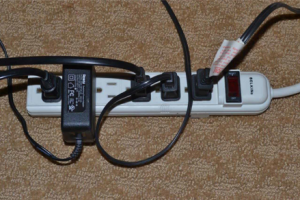FAQ on school safety
Question
Should I be concerned with PCBS in caulking?
We have an older school building in our district, and I recently heard that there may be a threat to our students’ health from polychlorinated biphenyls (PCBs ) in the caulking that was used in the building. Should I be concerned about this?
Answer
In recent years, the US Environmental Protection Agency (EPA) has learned that caulk containing potentially PCBs was used in many buildings, including schools, in the 1950s through the 1970s. In general, schools and buildings built after 1978 do not contain PCBs in caulk. On September 25, 2009, EPA announced new guidance for school administrators and building managers, with information about managing PCBs in caulk and tools to help minimize possible exposure, and further information on this can be found at their website. To quote the EPA’s information, “the potential presence of PCBs in schools and buildings should not be a cause for alarm.” There is most likely no need to panic, or take drastic measures such as closing the school building, if PCB’s in caulk are suspected.
If your school or building was built or renovated between 1950 and 1978, there are several immediate, relatively low cost steps schools can take to reduce potential exposure until it can be determined with certainty if PCBs are present in caulk used in the building and any contaminated caulk can be removed. For further information, visit the website referenced above, or call your Hanover Risk Solutions consultant.
This material is provided for informational purposes only and does not provide any coverage or guarantee loss prevention. The examples in this material are provided as hypothetical and for illustration purposes only. The Hanover Insurance Company and its affiliates and subsidiaries (“The Hanover”) specifically disclaim any warranty or representation that acceptance of any recommendations contained herein will make any premises, or operation safe or in compliance with any law or regulation. By providing this information to you. The Hanover does not assume (and specifically disclaims) any duty, undertaking or responsibility to you. The decision to accept or implement any recommendation(s) or advice contained in this material must be made by you.
LC DEC 2018 10-426
171-0992 (3/14)
FAQ on school safety
Question
Should I be concerned with PCBS in caulking?
We have an older school building in our district, and I recently heard that there may be a threat to our students’ health from polychlorinated biphenyls (PCBs ) in the caulking that was used in the building. Should I be concerned about this?
Answer
In recent years, the US Environmental Protection Agency (EPA) has learned that caulk containing potentially PCBs was used in many buildings, including schools, in the 1950s through the 1970s. In general, schools and buildings built after 1978 do not contain PCBs in caulk. On September 25, 2009, EPA announced new guidance for school administrators and building managers, with information about managing PCBs in caulk and tools to help minimize possible exposure, and further information on this can be found at their website. To quote the EPA’s information, “the potential presence of PCBs in schools and buildings should not be a cause for alarm.” There is most likely no need to panic, or take drastic measures such as closing the school building, if PCB’s in caulk are suspected.
If your school or building was built or renovated between 1950 and 1978, there are several immediate, relatively low cost steps schools can take to reduce potential exposure until it can be determined with certainty if PCBs are present in caulk used in the building and any contaminated caulk can be removed. For further information, visit the website referenced above, or call your Hanover Risk Solutions consultant.
This material is provided for informational purposes only and does not provide any coverage or guarantee loss prevention. The examples in this material are provided as hypothetical and for illustration purposes only. The Hanover Insurance Company and its affiliates and subsidiaries (“The Hanover”) specifically disclaim any warranty or representation that acceptance of any recommendations contained herein will make any premises, or operation safe or in compliance with any law or regulation. By providing this information to you. The Hanover does not assume (and specifically disclaims) any duty, undertaking or responsibility to you. The decision to accept or implement any recommendation(s) or advice contained in this material must be made by you.
LC DEC 2018 10-426
171-0992 (3/14)
FAQ on school safety
Question
Should I be concerned with PCBS in caulking?
We have an older school building in our district, and I recently heard that there may be a threat to our students’ health from polychlorinated biphenyls (PCBs ) in the caulking that was used in the building. Should I be concerned about this?
Answer
In recent years, the US Environmental Protection Agency (EPA) has learned that caulk containing potentially PCBs was used in many buildings, including schools, in the 1950s through the 1970s. In general, schools and buildings built after 1978 do not contain PCBs in caulk. On September 25, 2009, EPA announced new guidance for school administrators and building managers, with information about managing PCBs in caulk and tools to help minimize possible exposure, and further information on this can be found at their website. To quote the EPA’s information, “the potential presence of PCBs in schools and buildings should not be a cause for alarm.” There is most likely no need to panic, or take drastic measures such as closing the school building, if PCB’s in caulk are suspected.
If your school or building was built or renovated between 1950 and 1978, there are several immediate, relatively low cost steps schools can take to reduce potential exposure until it can be determined with certainty if PCBs are present in caulk used in the building and any contaminated caulk can be removed. For further information, visit the website referenced above, or call your Hanover Risk Solutions consultant.
This material is provided for informational purposes only and does not provide any coverage or guarantee loss prevention. The examples in this material are provided as hypothetical and for illustration purposes only. The Hanover Insurance Company and its affiliates and subsidiaries (“The Hanover”) specifically disclaim any warranty or representation that acceptance of any recommendations contained herein will make any premises, or operation safe or in compliance with any law or regulation. By providing this information to you. The Hanover does not assume (and specifically disclaims) any duty, undertaking or responsibility to you. The decision to accept or implement any recommendation(s) or advice contained in this material must be made by you.
LC DEC 2018 10-426
171-0992 (3/14)
FAQ on school safety
Question
Should I be concerned with PCBS in caulking?
We have an older school building in our district, and I recently heard that there may be a threat to our students’ health from polychlorinated biphenyls (PCBs ) in the caulking that was used in the building. Should I be concerned about this?
Answer
In recent years, the US Environmental Protection Agency (EPA) has learned that caulk containing potentially PCBs was used in many buildings, including schools, in the 1950s through the 1970s. In general, schools and buildings built after 1978 do not contain PCBs in caulk. On September 25, 2009, EPA announced new guidance for school administrators and building managers, with information about managing PCBs in caulk and tools to help minimize possible exposure, and further information on this can be found at their website. To quote the EPA’s information, “the potential presence of PCBs in schools and buildings should not be a cause for alarm.” There is most likely no need to panic, or take drastic measures such as closing the school building, if PCB’s in caulk are suspected.
If your school or building was built or renovated between 1950 and 1978, there are several immediate, relatively low cost steps schools can take to reduce potential exposure until it can be determined with certainty if PCBs are present in caulk used in the building and any contaminated caulk can be removed. For further information, visit the website referenced above, or call your Hanover Risk Solutions consultant.
This material is provided for informational purposes only and does not provide any coverage or guarantee loss prevention. The examples in this material are provided as hypothetical and for illustration purposes only. The Hanover Insurance Company and its affiliates and subsidiaries (“The Hanover”) specifically disclaim any warranty or representation that acceptance of any recommendations contained herein will make any premises, or operation safe or in compliance with any law or regulation. By providing this information to you. The Hanover does not assume (and specifically disclaims) any duty, undertaking or responsibility to you. The decision to accept or implement any recommendation(s) or advice contained in this material must be made by you.
LC DEC 2018 10-426
171-0992 (3/14)





